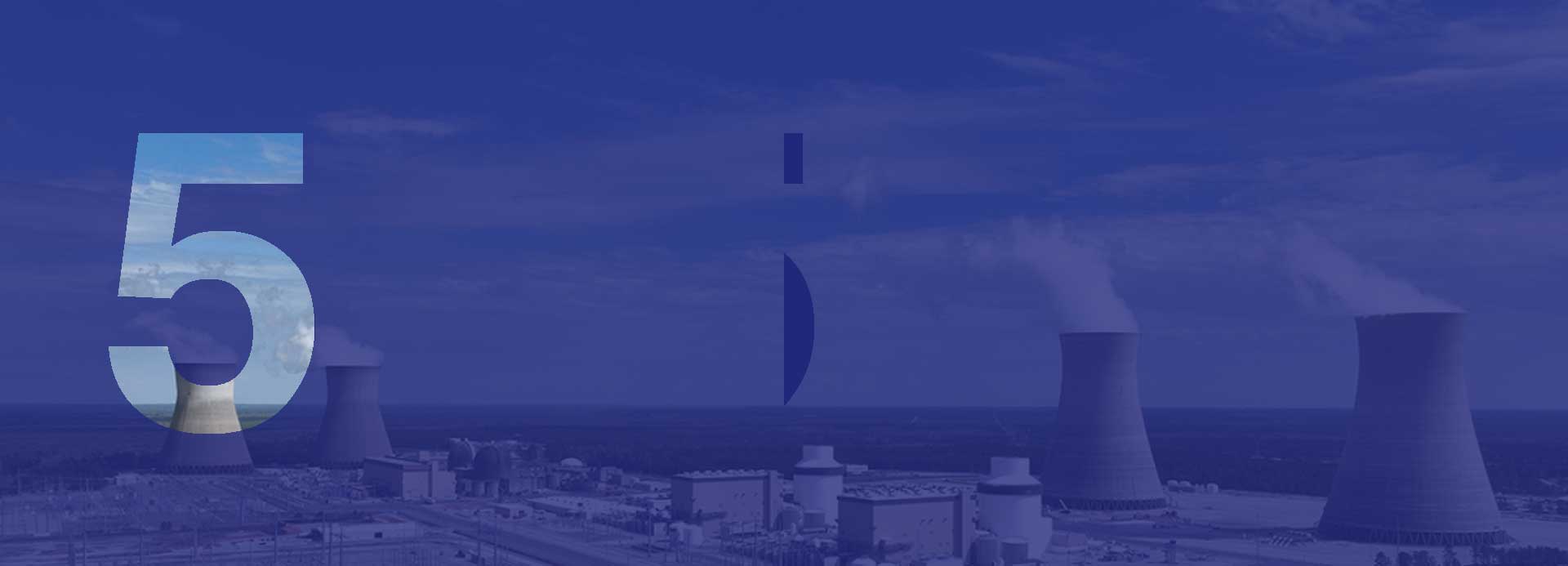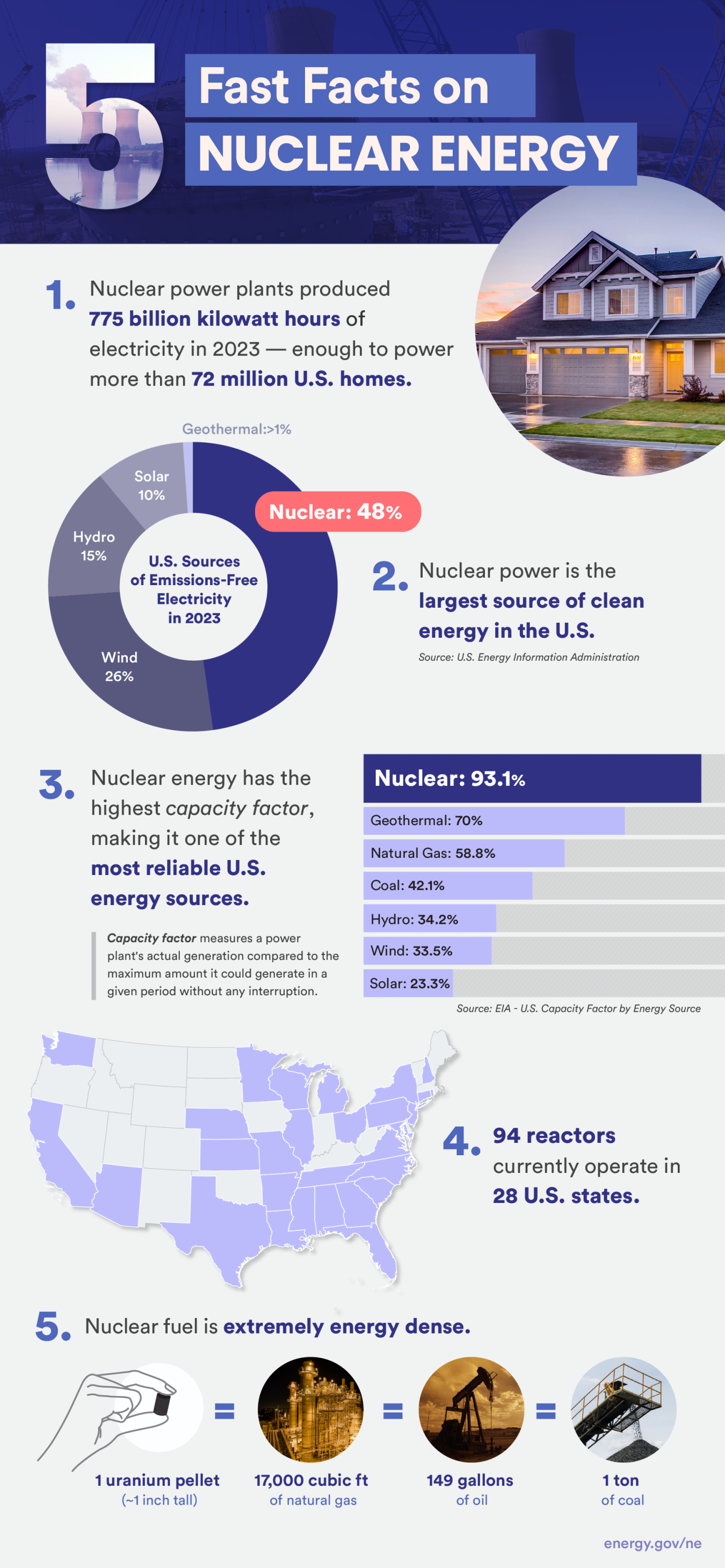

As energy demands continue to rise and the need for low-carbon solutions becomes more urgent, nuclear power stands as a reliable, clean, and sustainable source of energy for the U.S. and the world.
Nuclear energy stands at the intersection of innovation and sustainability, providing a powerful solution to many of the challenges faced by the energy sector today. As global concerns over climate change intensify, the need for reliable and low-carbon energy sources has never been more urgent. Nuclear power’s ability to produce vast amounts of electricity without emitting greenhouse gases positions it as a key player in the transition to a sustainable energy future.
The nuclear industry’s ongoing technological advancements are making nuclear power even more promising.
Innovations like Small Modular Reactors (SMRs) are set to revolutionize the field, offering the potential for more flexible, safer, and more affordable nuclear energy solutions.
These smaller reactors can be built off-site and transported to locations where they are needed most, offering energy solutions to remote or off-grid areas that have historically struggled with access to reliable power. Additionally, they present the potential for being integrated with renewable energy sources, providing a hybrid solution that can ensure a steady supply of power when renewable resources are low.
1. FACT
Nuclear power plays a crucial role in the U.S. energy landscape, providing a significant portion of the nation’s clean, reliable electricity. The 775 billion kilowatt hours produced in 2023 highlight nuclear energy’s ability to meet growing electricity demands while significantly reducing carbon emissions compared to fossil fuels.
2. FACT
With the U.S. generating nearly half of its emissions-free electricity from nuclear power, it significantly contributes to reducing the carbon footprint of the national grid. Unlike intermittent renewable sources such as solar and wind, nuclear power provides consistent and stable energy, making it an ideal partner for grid reliability. This constant output of electricity ensures that homes and businesses can rely on it as a backup to fluctuating renewable sources, especially when the weather doesn’t cooperate for wind or solar energy production.
Nuclear power is the largest source of clean energy in the U.S. – Source: U.S. Energy Information Administration
U.S. Sources of Emissions-Free Electricity Production:
- 1% Geothermal
- 10% Solar
- 15% Hydro
- 26% Wind
- 48% Nuclear
3. FACT
Nuclear energy has the highest capacity factor (93.1%), making it one of the most reliable U.S. energy sources. The capacity factor measures a power plant’s actual generation and compares it to the maximum amount it could generate in a given period without any interruption.
4. FACT
The 94 reactors currently in operation across 28 U.S. states reflect a strong and diverse nuclear infrastructure that serves millions of homes and businesses across the country.
5. FACT
Moreover, nuclear power’s high energy density is one of its greatest strengths. A small pellet of uranium—about the size of a fingertip—can provide the same amount of energy as several tons of coal or natural gas, making it incredibly efficient and space-saving. This high concentration of energy means that nuclear plants can generate large amounts of power from relatively small amounts of fuel, making them more sustainable in the long term. The compact nature of nuclear fuel also results in a significantly lower environmental impact when compared to fossil fuels, as much less fuel is needed for the same amount of energy generation.
Nuclear fuel is extremely energy dense, 1 uranium pellet ((~1 inch tall)) is equal to 17,000 cubic ft of natural gas is equal to 149 gallons of oil is equal to 1 ton of coal.
Fascinating Facts
Here are some more fascinating facts about American nuclear power plants:
-
In 2024, U.S. nuclear power plants are generating, on average, 65,669,772 MWh per month. This impressive amount of electricity plays a crucial role in meeting the country’s energy demands and reducing carbon emissions.
-
The state with the highest nuclear utility generation is Illinois, which also boasts the most nuclear reactors in the U.S. with a total of 11 reactors. This combination of large-scale power production and reactor capacity makes Illinois a significant contributor to the nation’s clean energy output.
-
Georgia is home to the largest and newest nuclear power plant in the U.S., the Alvin W. Vogtle Electric Generating Plant. This plant began commercially operating in 2023 and 2024, marking a milestone in nuclear energy development in the country. Vogtle’s addition brings advanced technology and expanded energy generation capabilities to the Southeastern U.S.
-
New York holds the distinction of having the smallest U.S. nuclear power plant, the R.E. Ginna Nuclear Power Plant. Despite its size, Ginna continues to play a key role in providing clean electricity to the region. Additionally, New York is home to the oldest operating nuclear reactor in the U.S., the Nine Mile Point Unit 1, which has been in operation since 1969. This reactor is a testament to the longevity and reliability of the nuclear power industry.
These facts highlight the diversity and importance of nuclear power plants across the United States, with varying plant sizes and ages, all contributing to a cleaner, more sustainable energy grid.
The infographic below created by the Office of Nuclear Energy summarizes the 5 facts about nuclear power in the U.S.


![3D Printing Facts: Printing in a Whole New Dimension [Infographic] hero-image-3d-printing-facts](https://www.skillzme.com/wp-content/uploads/2025/01/hero-image-3d-printing-facts-200x200.jpg)
![The 9 Most Powerful Supercomputers in The World [Infographic] The 9 most powerful supercomputers in the world right now](https://www.skillzme.com/wp-content/uploads/2025/02/hero-image-The-9-most-powerful-supercomputers-infographic-200x200.jpg)
![The Future of Jobs Report 2025 [Infographic] hero-image-the-future-of-jobs-report](https://www.skillzme.com/wp-content/uploads/2025/02/hero-image-the-future-of-jobs-report-200x200.jpg)


Recent Comments